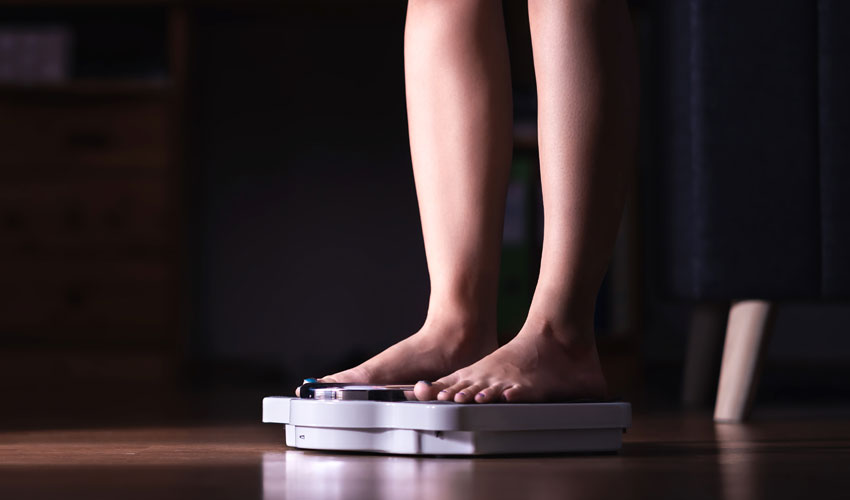The act of saying something negative about a person’s body is called Body shaming. It could be about their own or another person’s body. The remarks can be about a person’s size, age, hair, clothes, food, hair, or perceived attractiveness level. Body shaming can cause eating disorders, depression, anxiety, low self-esteem, and Body Dysmorphia, as well as a general feeling of hating one’s body.
Body shaming dates back to a time when the ideals surrounding women and men shifted. Thin women were thought to be more attractive than heavier women, and taller, muscular men were preferred over lanky men. Since then, women’s and men’s beauty standards have been largely unrealistic and unattainable.
Effects of Body-Shaming on Mental Health
Weight and body type stigma can have long-term psychological and physical health ramifications. People with disproportionate bodies are frequently stigmatized, according to recent research. According to studies, being body-shamed as a teenager has both short and long-term mental health consequences. Low self-esteem, anxiety and depressive symptoms are all symptoms of body shaming. Furthermore, body shaming can lead to poor eating habits. It can go in either direction: gaining weight by eating too much or losing weight by refusing to eat. People may be at risk of developing an eating disorder as a result of this.
What are eating disorders?
Eating disorders are a range of psychological illnesses that lead to the development of poor eating habits. People suffering from eating disorders may show a variety of symptoms such as severe restriction of food, food binging, or purging behaviours like vomiting and over-exercising. There are 3 major types of eating disorders; they are Anorexia Nervosa, Bulimia Nervosa, and Binge-eating disorder.
Anorexia Nervosa is the most well-known eating disorder which usually develops during adolescence and tends to affect women more as compared to men. People suffering from this disorder tend to view themselves as overweight even if they are extremely underweight. They constantly monitor their weight, avoid eating certain types of foods, and severely restrict their calories.
Like Anorexia Nervosa, Bulimia Nervosa also usually develops during adolescence and tends to affect women more as compared to men. People suffering from Bulimia nervosa frequently consume unusually large amounts of food in a short period. Each binge eating episode usually lasts until the person is completely satisfied. The person suffering from Bulimia nervosa would then purge to make up for the calories they’ve consumed and to alleviate stomach pain.
Binge-eating disorder is one of the most common disorders in the United States. The symptoms of the disorder usually occur during adolescence or early adulthood. The symptoms of this disorder are the same as that of Bulimia Nervosa, as the person suffering from the disorder indulges in binge-eating behaviour but doesn’t indulge in purging behaviours such as vomiting and over-exercising.
Many people who suffer from eating disorders also suffer from other mental illnesses such as Depression, Anxiety, and Addiction issues. Treatment for Depression, Anxiety, Addiction, and Eating disorders is provided at rehab centres such as Veda Wellness and Rehabilitation centre located in Mumbai, Bangalore, and opening soon in Delhi.
Effect of Social Media
Social media is an incredible tool for connecting with people all over the world. They can freely share their experiences, opinions, and ideas. But it does have a dark side too especially towards ‘body image’. Body image refers to a person’s perception of their own body and how attractive they believe they are. Social media users get exposed to online bullying, especially with regard to body shaming.
The majority of users are vulnerable to “body shaming” on social media platforms, which is a widespread phenomenon of receiving cruel feedback when your bodies don’t meet today’s society’s unrealistic beauty standards. Social media continues to play a significant role in shaping the lives of teenagers. It has a negative impact on body image and reinforces false beliefs about “how people should look.”
Social Media platforms expose young adults to an impossible set of beauty standards; emerging research shows that engagement with social media networks such as Instagram and Facebook has contributed to the raise of Body Dysmorphic Disorder in adolescents. Research done on the effect of Facebook and Instagram has shown that people who frequently use these applications have shown issues with Body image and suffered from Body shaming.
People using social media become obsessed with collecting likes, comments, and followers as it becomes a marker for success and popularity. These aspects of appreciation become a direct source of self-worth for the users. The anonymous nature of social media also brings instant negative, fat-shaming comments and powerful #hastags highlighting their bodies, putting a lot of pressure on them to look “up to the mark” and compete with their peers.
The solution to reducing the effect of social media is to be mindful of what pages and accounts you follow as a user. Recently, there has been an increase in the amount of social media pages that create body-positive content and works towards creating awareness of body-shaming and body image issues. Hence, the users must follow such pages which will help them feel better about themselves and their bodies as well.
How can we work towards this issue?
The ultimate goal has to be to remove the ‘ideal’ body type standards from people’s mindsets and to make that happen education and awareness must be provided. The education has to be provided from the school level so that children and young adults imbibe a more body-positive image for themselves.
Development of a body-positive image at a younger age will help them have better self-esteem and confidence which is required to face challenges during adulthood.

